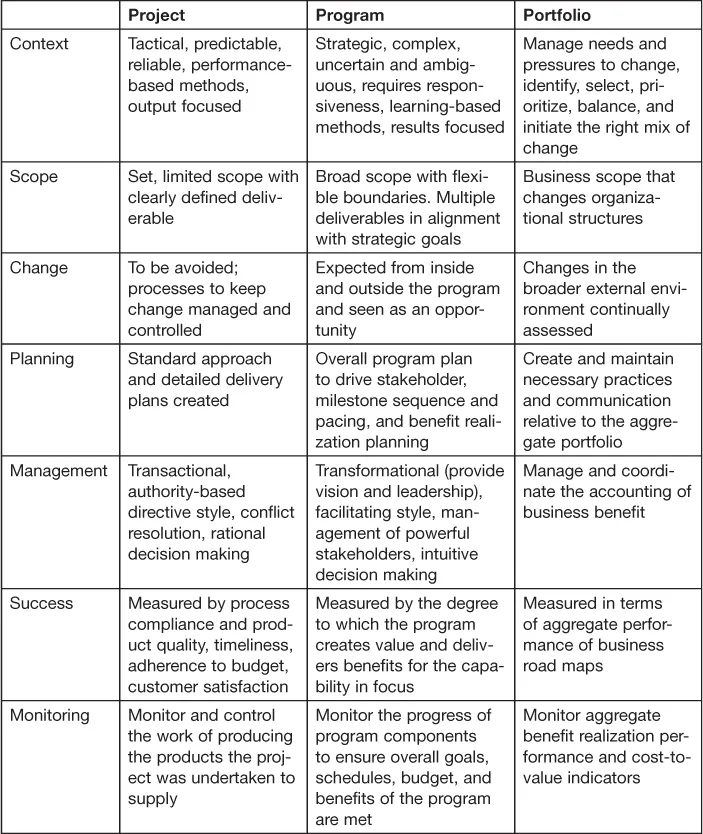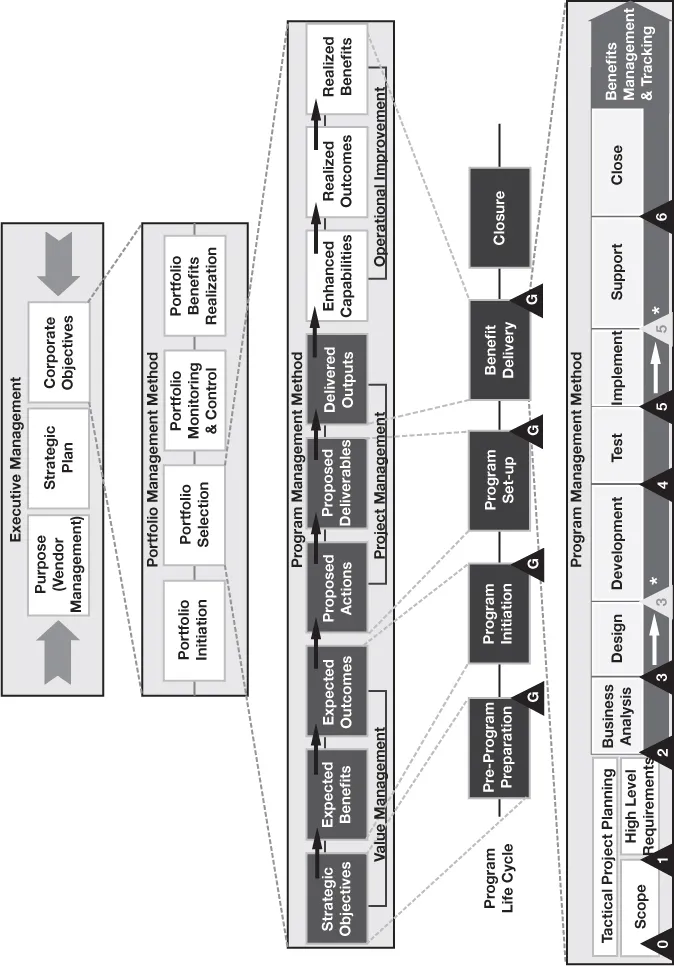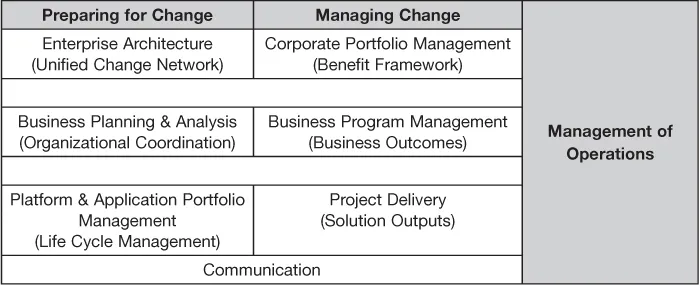![]() SECTION 1: DISCOVERY, SCOPE, AND DEFINING BUSINESS SOLUTIONS
SECTION 1: DISCOVERY, SCOPE, AND DEFINING BUSINESS SOLUTIONS![]()
IDENTIFYING SCOPE AND SOLUTIONS: ARE WE DOING THE RIGHT THINGS?
In an information age, an on-demand era associated with a “have it now” culture, the natural, human condition is to gravitate toward consumption and use of a product or service (the “what”), typically with little concern for the complicated world of how those products or services came to be, or why. In the business world, when it comes to change, the last forty years have seen a heavy focus on “doing things right,” with a view to satisfying ever demanding user expectations. From process improvement and reengineering to change management, product and project management, a focus on methodology, process compliance, a series of linear, almost mathematical “painting-by-numbers” steps is observed in identifying scope and solutions.
While doing things right is vital, it is not immediately clear in many organizations that the list and mix of the things they are doing and have planned to do over a given timeline are the “right” things: balancing the needs of the environment, capabilities, and assets of the organization with constraining factors such as risk, costs, dependencies, and resources to produce the optimal portfolio of investments (change initiatives), as aligned to the companies’ missions, strategies, and objectives. It is suggested that doing the wrong things really well is not a good measure of success. Organizations need to demonstrate execution competence of the right things at the right time to maximize their chances of remaining relevant.
CHANGE: PORTFOLIO, PROGRAM, AND PROJECT MANAGEMENT
While the terms “portfolio, program, and project management” are commonplace in today’s business vernacular, a clear, concise, and commonly accepted understanding of these concepts does not exist. Further, in the broader context, the distinctions between portfolio, program, and project management are blurred, at best. A major part of the difficulty in this respect is that these concepts are: a) broad, and b) complex. In a time where solutions are desired quickly and simply, selling complex disciplines that can enable the journey to this utopia presents challenges in terms of adopting a program management capability. For example, the “What’s in it for me” factor is difficult to articulate in a 15-second elevator pitch.
A Focus on Program Management
Strictly speaking, portfolio management is about ensuring that enterprises are “doing the right things.” This concept will be clarified and demonstrated in this chapter. Focus is given to the domain of program management; however, this is a critical enabler of the concepts of portfolio management and project delivery. It is also a key component of an enterprise-level change capability.
It is not easy to find a shared understanding of “what” program management is and of critical importance, “how” to do it. There are a number of (commonly accepted) interpretations as to what a “program” is. The three main definitions of a program are:
- simply, a large project,
- a group of interrelated projects, or
- a composite of identifying and selecting major change initiatives, and seeing them manifest.
One thing is clear: the domain of program management is multifaceted and relatively complex. As such, it is difficult, and perhaps futile, to provide an isolated, meaningful definition of a clear, coherent understanding and definition of the differences between portfolio, program, and project management.
The Project Context: Doing Things Right
Projects exhibit a short-term focus, a “product-centric” perspective, and are tactical in nature. They have well-defined objectives and deliverables, and therefore, possess a certain degree of predictability. There may be high uncertainty at the beginning (high assumptions/facts ratio), such that the focus is to reduce uncertainty via work breakdown, planning, and risk analysis, followed by quality, time, and cost control. Projects focus on achieving “operational improvement,” and the paradigm for projects is about “performance.” Project management is a decision implementation process that seeks to keep change to a minimum. The measure of success is typically delivering the right output (scope), at the right time, within the right cost.
The Program Context: Bridging Strategy and Execution
As shown in Table 1.1, there are key differences between project, program, and portfolio management. Programs exhibit a medium-to-long term focus and a “benefit-centric” perspective. The organizational situation is complex, and there are multiple stakeholders. There is uncertainty (degree as to known, knowable, and unknown solutions) and ambiguity (expectations vs. defined requirements; conflicting aims; continuous readjustments). Programs reduce uncertainty and ambiguity through the elaboration of needs and expectations, as aligned to the strategic objectives being pursued (concept of “value management”), negotiation, and decision making. Programs focus on achieving “business change” and the paradigm is a “learning and performance” cycle. Program management is both a decision-making and decision-implementation process.
Programs comprise projects in addition to other key management capabilities of governance and decision management, benefits realization, stakeholder engagement, and dependency management. All of these enable the program to effectively deal with expected change, while bridging the domains of strategy and execution.
Portfolio Management: Doing the Right Things
As illustrated in Figure 1.1, there is a clear relationship between executive, portfolio, program, and project management. While the initiatives that comprise projects and programs are largely concerned with “doing things right,” portfolio management focuses on ensuring that there is an appropriate, feasible, and desirable return on investment—that the organization is “doing the right things.” To achieve this, portfolio management is concerned with ensuring that change initiatives contribute to the organization’s strategic objectives, and the outcome represents value for money.
Table 1.1 Differences between project, program, and portfolio management
While a project may deliver all the required features to the specified quality, deadline, and budget (therefore, traditionally declared “successful”), it would be difficult not to accept a reduced measure of success where, in the fullness of time, the project turned out to be the wrong initiative to commit time, money, and resources to in the first place. The outputs of the project perhaps were never being consumed and used by the business, and therefore, the targeted benefits were never realized.
Figure 1.1 Relationship between executive, portfolio, pr ogram, and project management
Portfolio management addresses these issues by providing the mechanisms for translating strategic objectives into an appropriate, feasible, and desirable mix of change initiatives focused on optimizing the realization of targeted benefits and effectively balancing cost, resources (available capacity), risk (achievability), and dependencies at the enterprise level.
Program Management as a Key Capability
The ability to adapt and change at the organizational level is a key driver to maturing business capability and growing sustainable value. In addition to the classic business capabilities defined in the value chain (sales, operations, etc.), a modern, dynamic, and fast-paced environment requires that a core competence of any organization going forward must be the ability to identify, react, and adapt to change (in technology, attitudes, trends, and so on) to ensure continued relevancy and competitive viability. Program management provides a consistent approach to effect larger-scale organizational change in this environmental context.
As an integral part of a corporate change capability, programs provide the bridge between business strategy (manifested in portfolios) and tactical change initiatives (projects) to deliver results. As a structured approach to enterprise driven management of change, programs exist to make sense of complex, often ambiguous environments enabling a robust, business-led evaluation of options.
Management of programs is a distinctive business service of a change capability. As a service, it works within the construct of an enterprise architecture that incorporates organizational and systems design through a coordinated set of capability based planning services. Collectively, these services prepare business users in readiness for end-to-end change. Program management provides the vehicle to address pressures on, and the needs of business, as expressed through its environmental factors, business strategies, and strategic working assumptions.
Key change behaviors support a consistent approach to business governance. The goal in utilizing program management practices, shown in Table 1.2, is to drive business thinking toward achieving the right coordinated outcomes within each business unit. Providing clarity on change value propositions enables effective governance and investment (portfolio) alignment, and empowers decision making at all levels of leadership in a timely manner.
Table 1.2 Enterprise change capability
Once expected outcomes are clearly defined, program management becomes a performance management practice that is intended to deliver outcomes with the highest possible efficiency (best scope/quality vs. lowest cost/time).
Another key benefit of managing programs versus projects is that the management of change occurs at the enterprise level. Instead of simply managing change, you have a broader concept, and thus, a broader reach. Finally, developing program management skills and practices offers a number of organizational benefits to effect sustainable change, i.e., the transformation as shown in Table 1.3.
With the above context in mind, a simple, pragmatic definition of a program is offered:
A program is a group of related change actions (projects and operational activities), managed in a coordinated way, to obtain benefits and control not available from managing the actions independently.
Adopting Program Management
Program management is a complicated discipline. Therein lies a number of challenges to its adoption and successful application. Program management calls for a certain level of application to appropriately understand it. It involves many moving parts, and many management and leadership concepts, and needs to marry other professional disciplines and associated practices, such as change management, vendor management, and procurement practice. It requires intelligent knowledge of organizational operating models (ways of working) and experience at effecting enterprise-level change. It requires an understanding of how to assemble and calibrate the correct features and functions, in the appropriate sequence and pace, which is only possible by having experienced the journey previously—ideally, experienced several times. In the words of Lao Tzu, “A journey of a thousand miles begins with a single step,”1 and the first step is often the hardest.
Table 1.3 Benefits of a program management service
To undertake programs, organizations need to be comfortable with a number of conditions that traditional leadership approaches strived to reduce or stamp out, such as:
- Knowing what you want to achieve, but being comfortable with the fact that you do not yet have the answer as to how you’re going to achieve the goal;
- Uncertainty, a turbulent, often volatile environment;
- Risk, and increased understanding and appetite for i...





